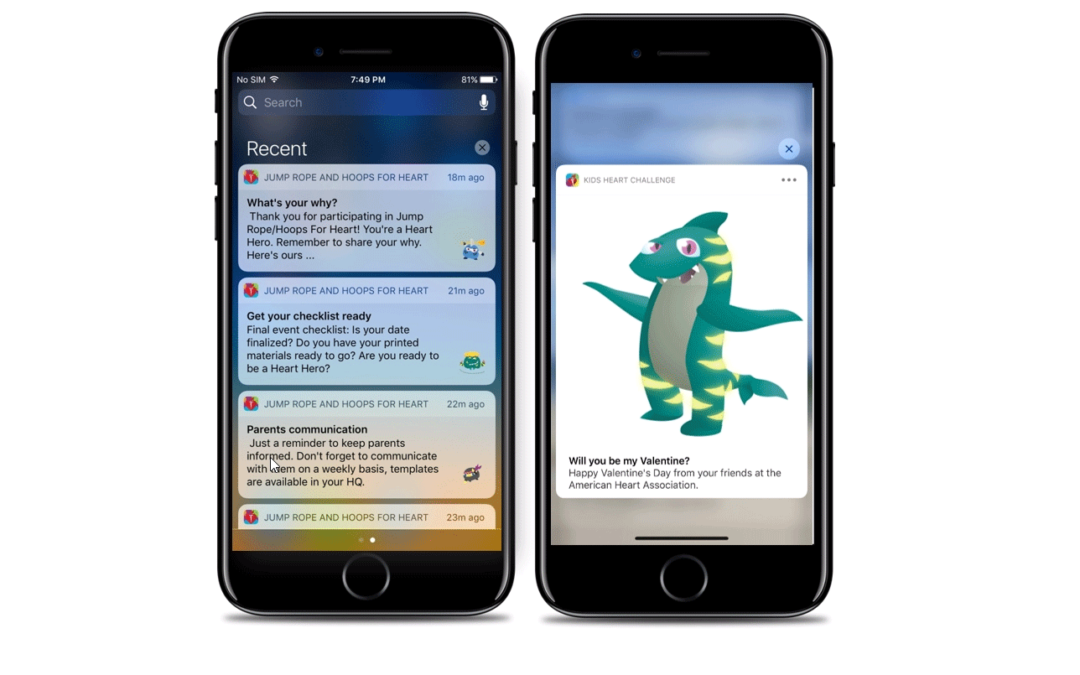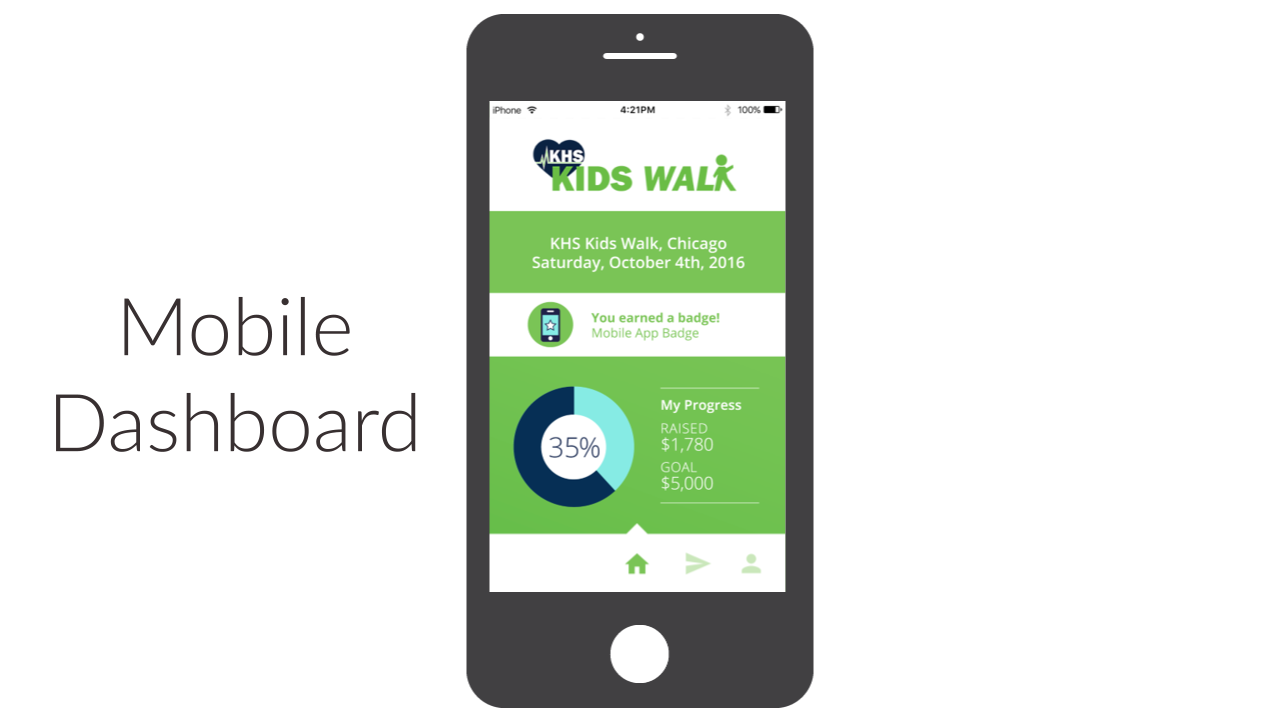Anyone with a mobile device is familiar with the concept of push notifications. We appreciate the mostly unobtrusive reminder that our best friend has just sent us a text, that the email we’ve been waiting on has finally arrived, or that our favorite airline app has an update to download. While some people choose to turn notifications off, or opt out of them app by app, the flexibility exists to customize their usage.
That said, for those that do enable them, it opens up a whole new communication channel. According to Localytics, the “sure, ping me!” audience is far more engaged than the “don’t bug me” audience. Push-enabled app users logged 53% more monthly sessions (app visits) compared with users who had not engaged with a push message. When the name of the game in peer-to-peer programs is maximizing participant fundraising asks, that is a key metric for success. Whether your participants visit their fundraising website or the program’s app, the hope is that while they are there, they are sending more asks, thanking their donors and sharing their personal story.
The Localytics study also stated that push-enabled app users have higher longevity rates. After three months, 41% of push-enabled users were still using the app, far exceeding the 18% of push-disabled users who were still using the app.
Thankfully, push notification engagement is still on the rise. While the average opt-in rate is 53.3% — which has increased only 1.3% since 2014, by the way — engagement across all apps has seen a 30% lift since January 2017. This engagement, which is measured as the average number of sessions that push recipients complete within the first week of receiving a notification, is currently peaking at 3.75 sessions — and shows no signs of slowing down.
So, why are push notifications so popular as a communication channel? I agree with a few of the reasons provided by this blog. One is they have absolute visibility … well, mostly. Depending on how the push notifications are set up on a person’s device, the chances of them being seen, if not read, are pretty high. For this reason, from a sender’s perspective, they have proven effective in driving recipients back to the app or website and for most organizations that means more revenue. In addition, because recipients have the freedom of choice to enable or disable them, the act of opting in serves as a pretty reliable proxy for audience loyalty.
I can attest to these points based on what we saw in our Boundless Fundraising analytics earlier this year. For a majority of our clients, peak usage of the mobile app was occurring in the evening hours. Makes sense — who isn’t playing on their phone while decompressing on the couch in front of the TV after the work day? Or while sitting on cold bleachers at their kid’s basketball practice? That is, until we started sending push notifications at 11 a.m. CST. Now the same analytics dashboards are saying the peak usage time of our mobile apps is … you guessed it, 11 a.m. CST.
And that’s the power of push notifications, y’all.
Going into the fall with the latest version of our mobile solution, we will be collecting more specific engagement data on push notifications, and I will be anxious to see not only how they are driving traffic but also, and more important, how they are increasing the fundraising behavior we want from peer-to-peer participants. What we do know is that to fully harness the value of push notifications, they need to be relevant, visual and personal (meaning segmented when possible). That may seem like a tall order for 140 characters or less (remember when that’s all Twitter allowed?), but I believe push notifications are an untapped communication strategy in peer-to-peer — and one we look forward to exploring with our clients and leveraging to their benefit.


